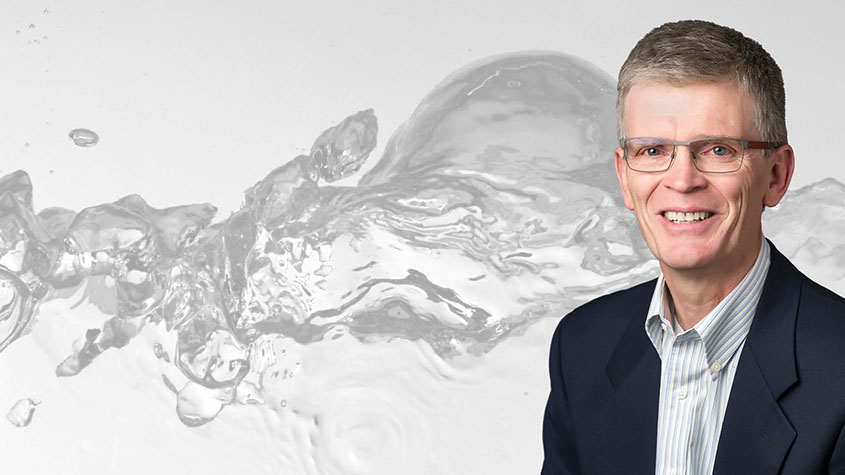Harnessing Hydropower To Achieve a Sustainable Future
NREL’s Hydropower Technical Lead Greg Stark Reflects on How the Conversation Around Hydropower Is Changing

Greg Stark is the Hydropower technical lead at the National Renewable Energy Laboratory (NREL). Previously, he led the U.S. Department of Energy’s Water Power Technologies Office's Operations and Planning research area for its HydroWIRES Initiative. He shared his thoughts on hydropower’s future.
The conversation around hydropower is changing, and we, at NREL, are honored to be part of it in 2022. The steps we take this year will lay the foundation for achieving our short- and long-term renewable energy goals. Fortunately, the timing couldn’t be better. Renewable energy is increasingly affordable, the conversation about hydropower is growing more positive, decision-making is increasingly strategic, and the Biden administration has set a goal for a carbon-free electricity grid by 2035.
Renewable energy costs are dropping faster than expected, and in many areas of the country renewables are now a cost-effective form of power generation. This is good news for hydropower, as variable renewable energy resources are at their best when paired with dispatchable ones, like hydropower and pumped storage hydropower (PSH). Think about it. In a high-renewables, low-carbon world, hydropower could be one of the few forms of on-demand generation left. It is this capability that makes hydropower special—the ability to store excess energy in reservoirs weeks, months, and sometimes years until needed. PSH complements hydro in that it can store and later deliver huge quantities of wind and solar energy that would otherwise be lost to curtailment. Both hydro’s and PSH’s attributes will likely be in high demand as we move toward a sustainable grid.
Unfortunately, hydropower’s capabilities are often poorly represented in today’s power systems models. We are working to address that by coupling a model that simulates river basin operations with a model that looks at grid operations. Together, the combined model provides a holistic approach that offers grid operators and planners improved insight into hydropower’s true capability and availability.
We’re also thinking about ways to help ensure that the United States implements energy storage technologies that protect the environment. That’s why NREL researchers are conducting a life cycle assessment that compares PSH and lithium-ion batteries. While PSH and batteries can both be part of a low-carbon solution, how we build them and how much we build of each matters.
The perception of hydropower has changed markedly in large part due to Stanford University’s Uncommon Dialogue process. This 2.5-year effort brought the U.S. hydropower industry and the environmental and river conservation communities together to rethink current infrastructure and the value of hydropower. As part of the dialogue, a joint statement on collaboration suggested areas for action that piqued the interest of the NREL hydropower research team.
Particularly interesting was the recommendation to accelerate the development of hydropower technologies and practices to improve power generation efficiency, environmental performance, and wind energy and solar power integration. While many of us who work in advancing hydropower technology already believe that hydropower is key to integrating renewable energy sources and meeting low carbon goals, it was still nice to see. It paralleled what we have been doing here at NREL, in terms of seeking ways to incorporate modern technologies to limit environmental impacts of hydropower projects. Additionally, their suggestion for increased basin-scale decision-making closely parallels our independent efforts to combine river basin operations and grid models to make better hydro-related decisions. These collaborations and the goals that arose from them provide immense optimism for the future of the clean energy grid.
The Biden administration’s goal of creating a carbon-free electricity grid by 2035 has created urgency across stakeholder groups, which is increasing collaboration and productive conversations on how to best utilize existing infrastructure. People who, just a few years ago, would have thought a zero-carbon grid was impossible are now actively involved in conversations on how to attain that goal. And, in many discussions, like with the Uncommon Dialogue, hydropower plays a central role in reaching the goal.
We’re already seeing the impacts of this work at the federal level, for example, in the language of the recently passed Bipartisan Infrastructure Law. My hope is that these hydropower dialogues begin trickling down to the state, county, and planning-commission levels. Ideally, individuals and communities will begin discussing how hydropower and pumped storage can help them meet their sustainability goals.
The Bipartisan Infrastructure Law includes approximately $800 million in funding that will go toward the improvement of safety, efficiency, environmental, and reliability of existing hydropower systems. In addition, the new law promises $10 million of funding for the initial phases (project design, transmission studies, power market assessments) and permitting of a large-scale (1,000-megawatt and bigger) PSH demonstration project. It’s been a long time since the United States has constructed a new plant, and I enthusiastically believe that the project has the potential to build awareness of the value of hydropower in reaching low-carbon goals. Once constructed, it will be an example that stakeholders can examine, study, and potentially incorporate in their planning efforts.
My career has been driven by a life-long interest in getting the most out of something in as efficient and affordable a way possible, and that led me to NREL. The scale and stakes have been amplified, and I firmly believe that hydropower is essential to make the zero-carbon grid possible. Its built-in storage capacity potential is a necessity on our national path to grid sustainability. Now, it’s time to continue developing the technologies and solutions so the science is as dynamic as the hope expressed in the evolving dialogue.
Learn more about NREL’s hydropower research, and sign up for NREL’s water power newsletter.
Read NREL Marine Energy Team Lead Mike Lawson's editorial on marine energy.
Last Updated May 28, 2025
